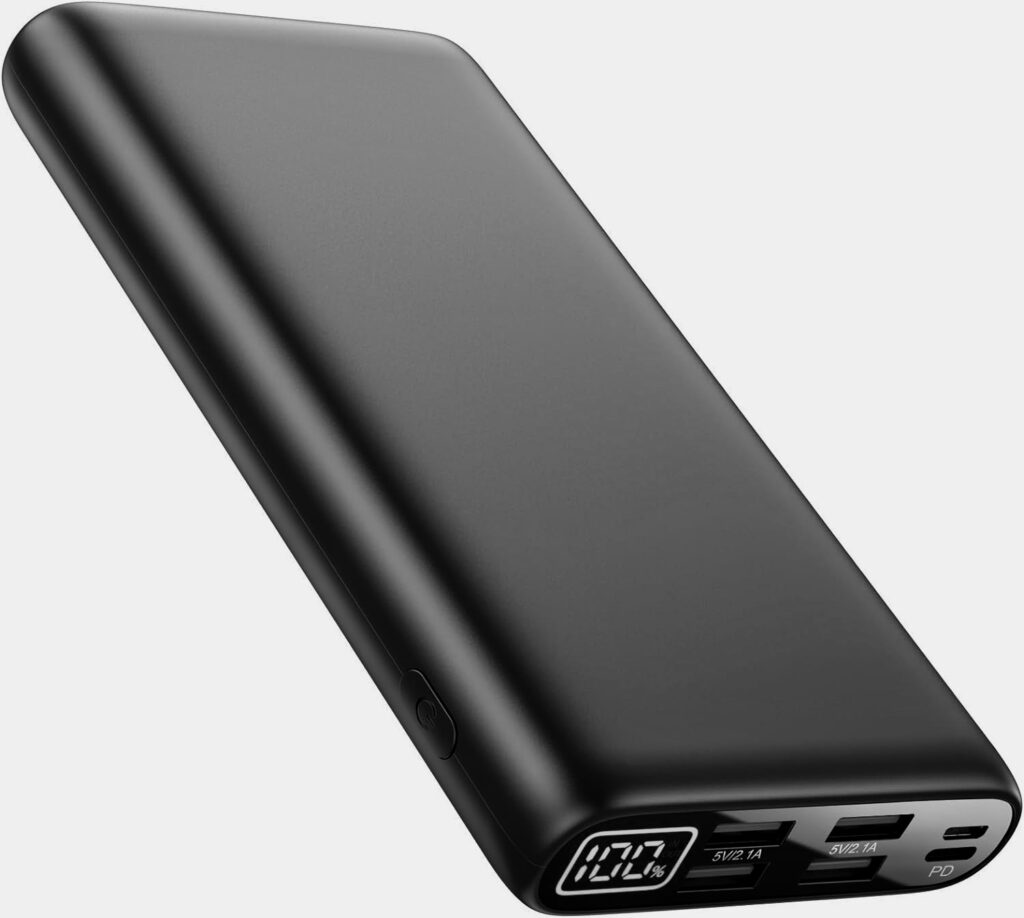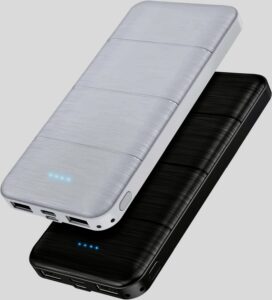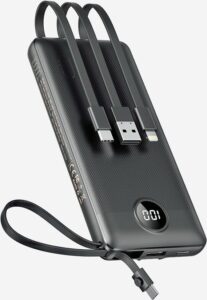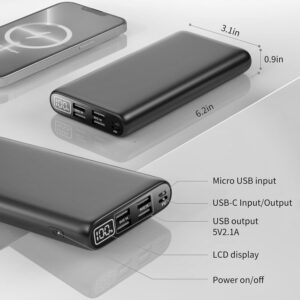
Best Power Banks On Flights
Discover essential guidelines for traveling with power banks on flights. Stay charged and informed for a seamless journey in today’s tech-driven world.
Have you ever found yourself at the airport, phone on the brink of dying, with a long flight ahead? You’re not alone. Many travelers encounter this pesky problem, especially in our tech-saturated world where we rely on devices for everything—from booking flights to keeping in touch with loved ones. Power banks can be lifesavers, but understanding their restrictions on flights is essential. Let’s unpack what you need to know about using power banks during air travel.

Image property of Amazon
Understanding Power Banks
Power banks are essentially portable chargers. They store energy in their batteries and provide a convenient way to recharge devices like smartphones and tablets. With various capacities available, power banks can be found to suit the needs of casual users as well as heavy tech-dependent travelers.

Image property of Amazon
Best Power Banks on Flights
Types of Power Banks
When considering a power bank, it’s helpful to know the different types available. They can generally be categorized into the following:
- Standard Power Banks: These are the most common and come in a variety of capacities, typically ranging from 5,000 mAh to 30,000 mAh or more.
- Fast Charging Power Banks: These power banks support quick charge technologies, allowing you to charge your devices faster than standard models.
- Solar Power Banks: Great for camping or outdoor activities, these harness sunlight to recharge but can be less reliable in overcast conditions or indoors.
- Multi-Port Power Banks: Ideal for charging multiple devices at once, these often come equipped with different charging outputs.
Understanding the differences can help you select the right one for your travel needs.

Image property of Amazon
Choosing the Right Capacity
When it comes to capacity, you want your power bank to match your device’s battery needs and your travel itinerary. Here’s a quick overview of typical device battery capacities:
| Device | Average Battery Capacity (mAh) |
|---|---|
| Smartphone | 2,000 – 5,000 |
| Tablet | 5,000 – 12,000 |
| Laptop | 30,000 – 50,000 |
Knowing the battery capacities can guide you in selecting a power bank that ensures your devices stay charged throughout your journey.
Airline Regulations on Power Banks
You might be wondering if you can bring your power bank on your flight. The good news is that yes, you can, but there are important regulations to keep in mind. Airlines and aviation authorities have established rules to enhance safety during air travel.
Battery Capacity Limits
Airlines tend to impose limits on the capacity of power banks that can be taken aboard flights. Most major airlines follow guidelines established by the International Air Transport Association (IATA). Here’s a quick reference:
| Battery Capacity | Allowed in Carry-On | Allowed in Checked Baggage |
|---|---|---|
| Up to 100 Wh | Yes | No |
| 100 Wh to 160 Wh | Yes, with approval | No |
| Over 160 Wh | No | No |
Always check with your specific airline before your trip, as regulations may vary.
Where to Store Your Power Bank
During the flight, you should ensure that you properly store your power bank. It’s recommended to keep it in your carry-on luggage rather than checked bags. This is primarily for safety reasons. In addition, most airlines allow you to use your power bank to charge devices while on board, provided your power bank meets the capacity guidelines.
Tips for Traveling with Power Banks
Preparing for your trip with a power bank doesn’t have to be stressful. Here are some tips to keep in mind to take advantage of your portable charger efficiently.
Check Your Devices’ Battery Life
Before you travel, ensure your devices are fully charged. This may seem obvious, but sometimes, battery life can sneak up on you. By maximizing the charge before your flight, you decrease the dependency on your power bank during your trip.
Know Your Airline’s Rules
While general guidelines exist, each airline can have its own set of regulations regarding power banks. It’s best to familiarize yourself with your airline’s specific policies about bringing and using power banks on flights.
Use Quality Products
Traveling with a subpar power bank could lead to frustration. Invest in a good quality product from a reputable brand, as this ensures safety and reliability. Cheap, unverified products may not only underperform but could also pose risks, including overheating or even catching fire.
Keep Your Power Bank Accessible
When you’re at the airport, make sure your power bank is easily accessible in your carry-on bag. If you need to charge your device during the flight, you want to grab it quickly without rummaging through your entire bag.
Using Power Banks While Traveling
Now that you know the regulations and tips for carrying your power bank, let’s discuss how you can make the most of it while traveling.
Charging on the Go
Power banks are intended to keep your devices charged while you’re on the move. If you’re taking layovers or waiting at the terminal, consider charging your devices while enjoying downtime until your next flight.
Plane Usage Considerations
During the flight, you can often use your power bank to charge your devices, but remember to follow those cabin rules! Use it discreetly when the crew is not conducting their safety checks or when they haven’t instructed otherwise.
Track Your Charges
If you frequently travel, keeping track of how many times your power bank has been used can help you assess its remaining charge throughout the day. Some power banks come with LED indicators, allowing you to see how much life remains.
Alternatives to Power Banks
In certain scenarios, other options might suffice when power banks aren’t allowed or are impractical.
Charging Stations
Many airports now offer charging stations. While this can be a convenient method to recharge, keep an eye on your devices. Not all airports provide secure charging areas, and leaving your devices unattended can pose a risk.
In-flight Chargers
Some airlines now provide in-seat charging ports or USB connections during their flights. When booking your tickets, check whether your airline provides this service. It can certainly ease your anxiety regarding battery life in the air.
Image property of Amazon
On-Board Computer Services
If you’re traveling on a longer flight, you may find that your airline offers in-flight entertainment systems that allow the use of laptops and tablets. When in use, make sure to secure your charger and connect to a power source while enjoying your movie or work.
What Happens If Your Power Bank Gets Damaged?
Accidents happen, and a damaged power bank can be a major inconvenience during your travels.

Best Power Banks on Flights
Signs of Damage
Keep an eye out for indicators that a power bank has been compromised. This can include swelling, unusual heat, or faulty charging. If you notice any such issues, it’s better to avoid using the device entirely.
Replacement or Repair
If your power bank becomes unusable while traveling, consider sourcing a replacement at your destination. Many electronics stores carry a variety of power banks. You can also check online for options and have one delivered where you’re staying.
Disposal of Damaged Power Banks
If damaged and non-functional, dispose of your power bank properly. Most airports have electronic waste disposal bins, and local recycling centers are equipped to handle hazardous devices. Don’t simply toss it in the regular trash.
In Summary
Traveling today often involves a delicate dance between your devices and their power sources. Power banks can be invaluable, allowing you to stay charged and connected while you navigate airports and flights.
Understanding the regulations and employing practical tips will ensure that your technology remains functional throughout your trip. By choosing the right power bank, being aware of airline policies, and utilizing alternatives when needed, you can embark on your travels with confidence.
So the next time you pack for a journey, remember to consider your devices’ power needs—you certainly wouldn’t want to run out of juice at 30,000 feet!
In this fast-paced world, devices are integral to our lives. Embrace the convenience of power banks, but stay informed, and you’ll ensure a smoother journey ahead. Safe travels!
Amazon Affiliate Disclosure: As an Amazon Associate I earn from qualifying purchases.







